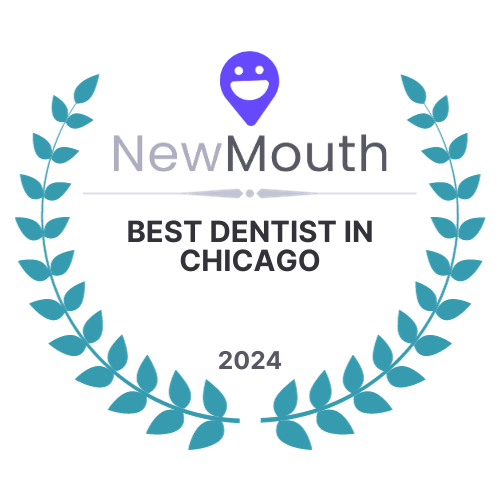Fluoride – the FAQs
My Baby’s Teeth Have Finally Arrived – Now What? The Skinny on Sealants
What is Fluoride exactly? Fluoride is an anion of the element Fluorine which is abundant in the Earth’s crust. It almost always occurs in nature as a compound, existing as a component of the minerals found in rocks and soil. As water passes over the ground, it picks up the fluoride compounds present, with the result that all water is naturally slightly fluoridated. (More on water fluoridation later!)
What does it do? Fluoride compounds - the most commonly used being sodium fluoride - affect the body in two ways.
- Systemic Fluoride - Fluoride ingested through food and water works to strengthen the teeth from the inside out. During tooth development, systemic fluoride is deposited along the entire tooth surface, strengthening the protective enamel layer before the tooth even erupts. Systemic fluoride also works its way into the saliva, which continuously bathes erupted teeth in a topical application of the compound, aiding in the remineralization cycle of the tooth.
- Topical Fluoride - Topical applications of fluoride, such as gels, toothpastes, rinses and varnishes, work directly on the surface of already erupted teeth to strengthen the enamel and aid in remineralization.
Why is it good for my teeth? The remineralization process, as you might have guessed, is the key here. While a tooth can’t completely repair itself, there is an allowance for replacing some of what’s lost to the hazards of the oral environment. Bacteria and acids will attack the surface of the tooth, demineralizing the enamel, eating away at the structure of the tooth and eventually causing decay. Mineral compounds such as calcium, phosphate and fluoride, when deposited on the tooth surface, help to replace what has been lost before decay can begin. The levels found in foods and untreated water are often insufficient to aid this remineralization, which is where supplements like water fluoridation and topical applications come in.
Will Fluoride kill me? NO! We know what a popular battle this has been in communities as the prevalence of fluoridated water has dramatically increased. While it is true that too much ingested fluoride can ultimately be fatal, the amount necessary to seriously harm someone is way more than what’s found in your water supply or recommended by the ADA. A lethal dose of fluoride is estimated to be at 5-10 g for most adults. In comparison, the recommended level of water fluoridation by the ADA is 0.7 to 1.2 ppm (parts per million), a very diluted dose.
That being said, it is important to be aware of how much fluoride your children are exposed to, as excessive exposure can lead to dental fluorosis, or a mottling of the tooth enamel that occurs during development. Children should not be given topical applications of fluoride until you are confident that they can spit them out effectively, generally at around 6 and older.
How often should I be getting fluoride? This varies depending on your age and level of oral health. As we mentioned above, children below 6 should not receive topical applications of fluoride - they are getting plenty from what they ingest as long as you live in a community with fluoridated water. (If you don’t, read about the ADA’s recommendations for fluoride here).
Children ages 6 - 16 should be using a fluoride toothpaste and getting treatments every 6 months from their dentist, We like a topical fluoride varnish for this application - the fluoride is essentially painted on and saves your child the discomfort of those messy gel applications we all remember!
Adults who are generally healthy and have no special concerns should be fine with just a fluoride toothpaste and fluoridated water. At your regular dental visits we’ll provide a minute long fluoride rinse for good measure.
There are adults for whom the above isn’t enough. This includes people who suffer from Xerostomia (dry mouth) due to medications or systemic disease, people with a history of periodontal infection or frequent cavities, and people who have a lot of dental restorations already present in the mouth. If you fall into one of these categories, we may recommend one or more of the following additional fluoride treatments:
- Prescription toothpaste - we carry Prevident in our office, which is a significantly higher percent solution (1.1% sodium fluoride) than over the counter toothpastes.
- Fluoride Gel - again, our choice here is Prevident, at the same concentration. We recommend this for use topically or in conjunction with custom fitted trays to aid the remineralization process.
- MI Paste Plus - while this does contain a low concentration of fluoride, calcium and phosphate are the two main ingredients in this paste that aid remineralization. This paste can be used as you would a fluoride gel - topically or inside custom fitted trays.
- Fluoride rinse - we always want you rinsing twice daily, even if you’re the picture of health. But if we’re trying to up your fluoride exposure we may suggest switching out your evening antiseptic rinse for a fluoride rinse - we generally recommend ACT or Sensodyne Pronamel rinses for this purpose.
Find the Answers
Start your journey with Strobel Dentistry in Chicago
Parking Validation
If driving, we validate for a discounted parking rate at the following location: Interpark: 20 E. Randolph is located at the intersection of Wabash and Randolph.
We are proud to offer exceptionally experienced, compassionate, and comprehensive Chicago dental care to our patients. Contact us today or schedule an appointment online to take the first step toward your best experience and results.
